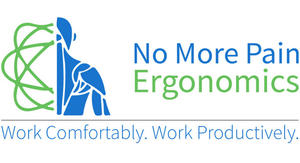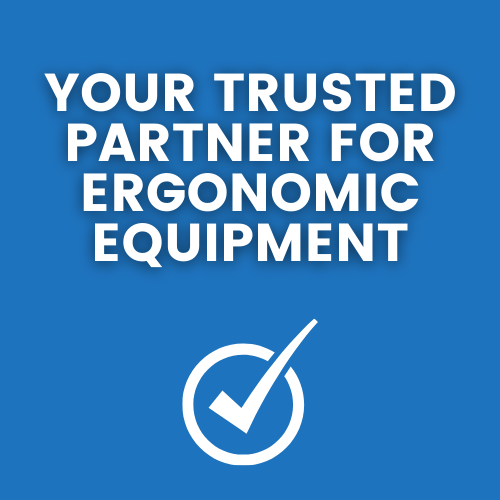-
Shop
- 🔥 Warehouse Clearance Sale 🔥
- Ergonomic Mice
- Ergonomic Keyboards
- Specialised Ergonomic Mice
- Standing Desks
- Ergonomic Chairs
- Laptop Stands & Risers
- Monitor Risers
- Computer Monitor Arms
- Footrests
- Wrist and Forearm Supports
- Back Supports
- Tablet Accessories
- Boardroom Chairs
- Headsets
- Other Ergonomic Equipment
- Online Ergonomic Training Courses
- New Products

- For Customers
- For Business Customers
- For Health Professionals
- About Us
- Reviews
Tennis Elbow
Ergonomic Considerations
What is Tennis Elbow?
Tennis Elbow (or Lateral Epicondylitis - technical name) is an upper limb injury caused by overuse of your arm, forearm, and hand muscles that results in elbow pain. Despite the name, you do not have to play tennis to get tennis elbow. The injury is caused by inflammation or damage of the muscle and tendon area around the outside of your elbow.
What Causes Tennis Elbow?
Tennis Elbow is an overuse injury. It is caused by repetitive use of the forearm muscles. The repeated contraction of the muscles and stress to the tissue result in a series of small tears in the tendons that attach the forearm muscles to the bone at the outside of your elbow. One of the most common cause for Tennis Elbow is repetitive use of a computer mouse. Using a computer mouse for long periods can result in the development of tennis elbow due to the overuse of muscles to grip the mouse and move the mouse.
How is Tennis Elbow Treated?
Initial treatment should generally involve resting the affected arm for at least a few weeks, in order to help the swelling reduce. During this time you should also avoid any activities that may aggravate your symptoms. If you consult with a Physiotherapist, you may find they recommend an arm brace. This will help to support your arm and reduce any aggravation. Applying ice packs can also help reduce your swelling.
Tennis elbow will most often resolve on its own with the right treatment.
What Ergonomic Equipment is Recommended for Tennis Elbow?
It is important to consider your working environment when looking at treating Tennis Elbow. Once you have consulted with your GP and a Physiotherapist, and your symptoms are beginning to improve, you may want to try to re-introduce using a computer mouse and keyboard again. Remember to start slowly and gradually increase the amount of time you use your mouse and keyboard for.
If you find your computer mouse aggravates your symptoms, you may need to consider changing to an ergonomic mouse.
Ergonomic mice, place your wrist and forearms in a more natural posture that helps to reduce the amount of muscle activity required to use your mouse. This in turn will help to reduce your symptoms and also the risk of aggravating your symptoms while you recover. We recommend the Delux vertical ergonomic mouse. This particular mouse will place your hand and arm in a more natural posture which will help to reduce the tension in your forearm muscles. By switching to this mouse, you will feel the difference immediately. The Delux vertical ergonomic mouse is one of our most popular selling ergonomic mice, and has helped many individuals with tennis elbow to recover completely and continue their work on a computer.
Recommended Ergonomic Mice for Tennis Elbow
A vertical mouse will help to put your wrist in a neutral posture. This change in working posture will help to alleviate some of the pain symptoms you may be experiencing. Below is our top 4 recommended Ergonomic Mice for Tennis Elbow.
ErgoFeel Vertical Mouse
The ErgoFeel Vertical Ergonomic Mouse is a great choice for anyone experiencing Tennis Elbow pain. The mouse is designed to place your wrist in a more comfortable posture and can help to prevent aggravation of your symptoms.
Wired or Wireless Models
Left or Right Hand Models
Ideal for Tennis Elbow Pain
Ease Vertical Mouse
The Ease Vertical Ergonomic Mouse has a lovely curvature that fits ever so nicely in the palm of your hand. The addition of a molded thumb rest also makes it easy to grip. Similar to the ErgoFeel Mouse, it will help to change your wrist posture and can help to reduce aggravation of your pain symptoms.
Wireless Model
Left or Right Hand Models
Ideal for Tennis Elbow Pain
Delux Vertical Mouse
Our customers go crazy for this mouse. Yes, this mouse has a following! People love the design of the Delux Vertical Mouse. It is designed to mimic a joystick / cylinder. This combined with the wrist rest guard at the back, make it really easy to just rest your hand on the mouse and not have to grip. There is something oh so comfortable about this mouse and similar to two mice above, it can help to reduce aggravation of your tennis elbow pain.
Dual Connect: USB + Bluetooth
Right Hand Model
Ideal for Tennis Elbow Pain
ErgoSlider Plus
The ErgoSlider Plus is an alternative mouse that is designed to be placed in front of a keyboard. This position allows your arms to be in a complete neutral position. Also, the roller bar that controls the mouse cursor provides a no-grip, ambidextrous solution for someone who is rehabilitating from Tennis Elbow.
No gripping necessary
Ambidextrous solution
Ideal for Tennis Elbow
Recommended Arm Supports for Tennis Elbow
An arm support will provide you with additional support to relax the muscles in your arm. These often get over used or tight when your workstation lacks a sufficient area for you to rest your arm. Consider adding one of the below options into your workstation setup.
Ergonomic Arm Stand Set
The Ergonomic Arm Stand Set is designed to provide users with a moveable forearm rest and ergonomically positioned mouse pad. The Ergonomic Arm Stand can support up to 11kgs of weight effectively relieving 90% of the weight undertaken by your wrists through to your shoulder.
Attaches to your Desk
3 Pivoting Joints
Height Adjustable
Ergonomic Arm Rest Arm
The Ergonomic Arm Rest Arm features two joints that are able to rotate with your arm movements, allowing your hand and arm to move freely but still feel supported.
Attaches to your Desk
2 Pivoting Joints
Ideal for Arm Pain







